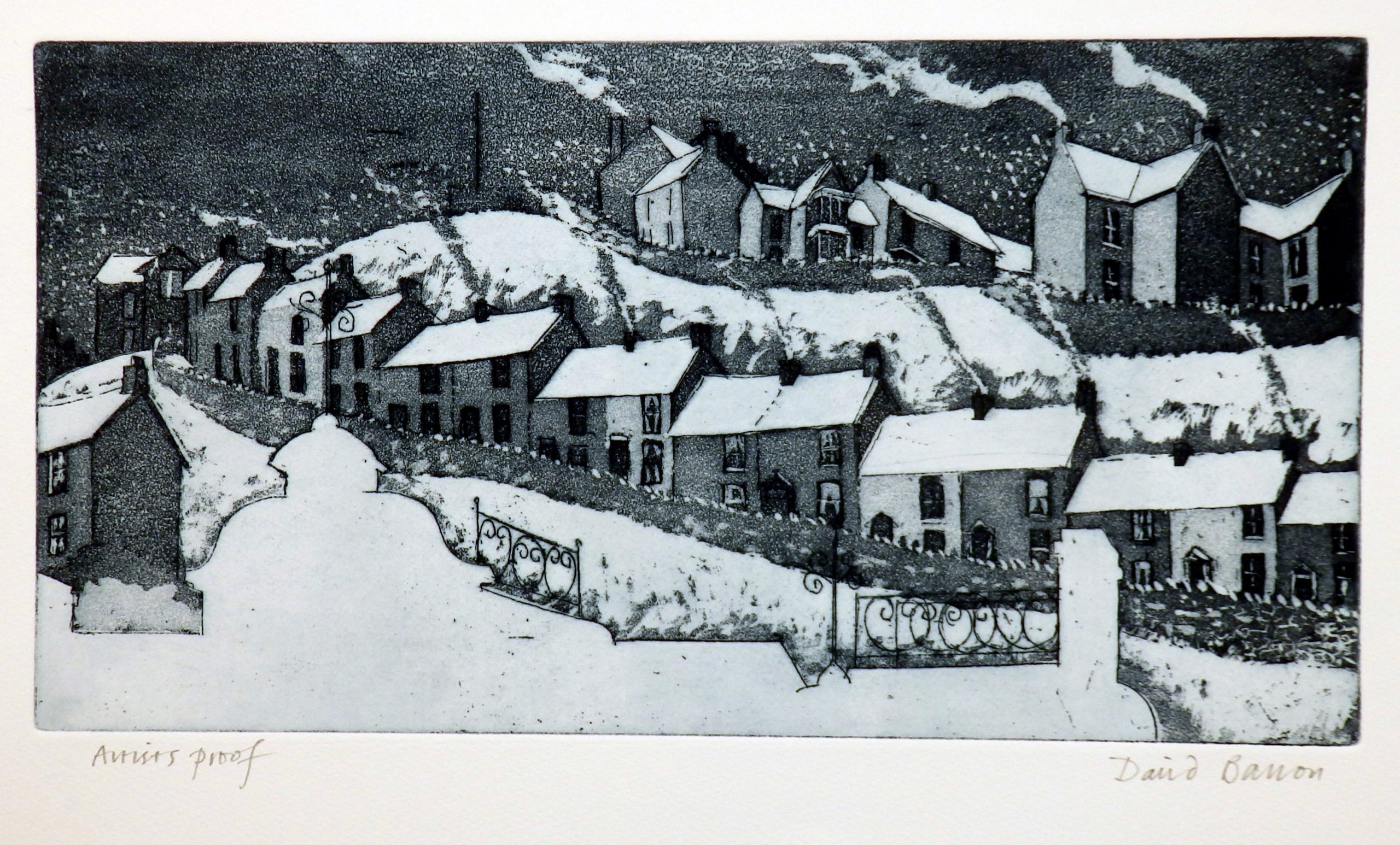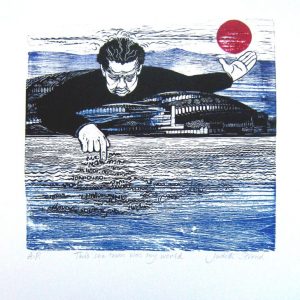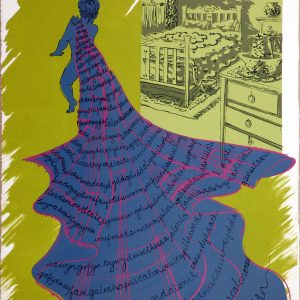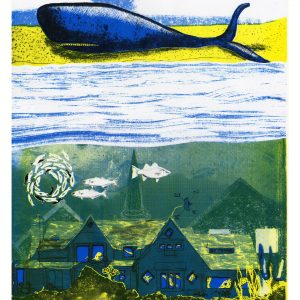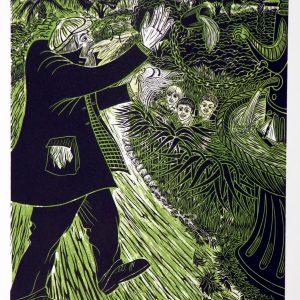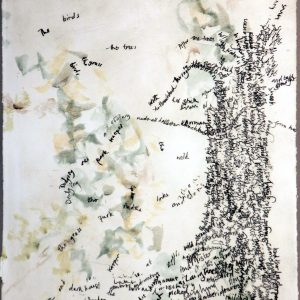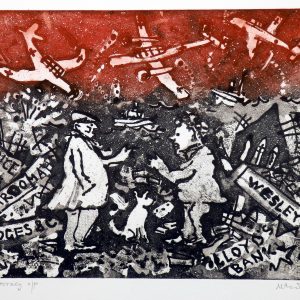Description
‘I could see the swathed hill stepping up out of the town, which you never could see properly before, and the powdered fields of the roofs of Milton Terrace and Watkin Street and Fullers Row.’ Dylan Thomas, Return Journey
This print recalls February 1941 when bombing had devastated the centre of Swansea; snow covers the newly visible roofs of the town, the surrounding hills and
terraced homes. The image revisits a charcoal drawing I made previously, looking upwards from the former Swansea College of Art building in Alexandra Road.
In the empty foreground is a silhouette shape of the Working Men’s Club and Institute, part of a section which escaped the bombs almost unscathed, leaving a legacyof stone, brick and cast iron. Behind, particular places (row, street and terrace) identified by the Narrator in Return Journey are revealed in succession, climbing towards Poppit Hill. Dark toned houses contrast with the white, snowy ground and ‘powdered fields of the roofs of Milton Terrace and Watkin Street and Fullers Row’(Dylan Thomas), their diagonal rhythms echoed by smoke rising from blackened chimney stacks.
Fullers Row runs across in ascending steps. In preliminary drawings I recorded the houses and hidden walkways up this hill, now known as Northill, with paths that could have been there long before any houses were built. The top has been half quarried away; Milton Terrace circles it, descending in a loop to join Watkin Street. A sheer drop down the face of the quarry lies just beyond
their boundary walls. I developed ideas to explore the pathways, stone steps and walls which run between these passages, including a bird’s eye view to show the face of the quarry.
The final print is taken from an aluminium plate; varying depths etched into the surface with copper sulphate and salt create differently toned lines. The slate colour is mixed cyan blue and black. Adding the aquatint process, where the plate is powdered with fine resin dust, allows for a further sequence of tonal areas and evokes the
notion of ‘powdered fields’.
Painter/printmaker, David Barron was born in London. He studied at St Martin’s School of Art and Goldsmiths and has been based in Wales since setting up the Foundation Course at
Swansea College of Art in the 1960s. David has forthcoming solo exhibition at the Royal Cambrian Academy in 2014.

